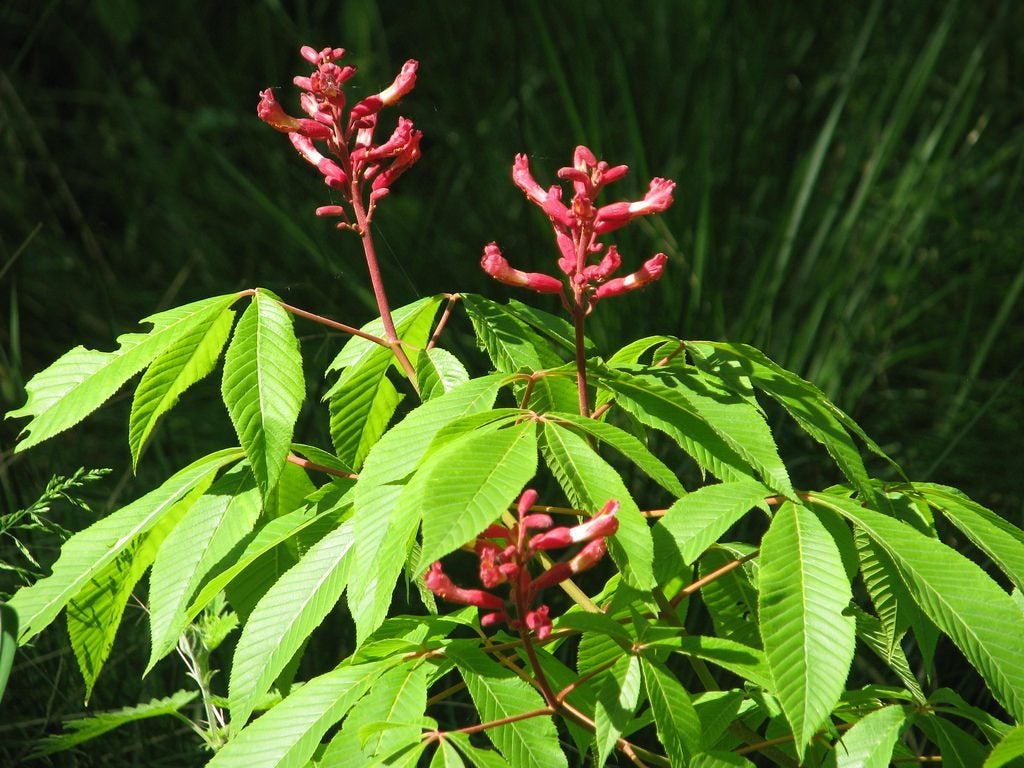Red Buckeye Trees: Tips On Caring For Dwarf Red Buckeyes


Dwarf red buckeye trees are really more like shrubs, but no matter how you describe it, this is a nice, compact form of the buckeye tree that produces the same interesting leaves and upright spikes of spring flowers. Planting and caring for these shrubs is not difficult and can add a great anchor to your garden.
Humilis Buckeye Info
Aesculus pavia ‘Humilis’ is a dwarf form of the red buckeye tree. The red buckeye is a true tree, but a small one that grows to about 15 to 20 feet (5-6 m.) tall when cultivated, a little taller in the wild. This tree is most desirable for the showy spikes of deep red flowers it produces in the spring. Not only do they add color to the garden, but they also attract hummingbirds. The ‘Humilis’ cultivar is a dwarf version of this tree and is considered to be more of a shrub than a tree. It grows low instead of upright and develops a rounded, shrub-like form. It’s a great option for your garden if you like the red buckeye but want a shrub or a smaller tree. Dwarf red buckeye care is also minimal, so this is a good choice for a low maintenance shrub.
How to Grow a Dwarf Red Buckeye
The dwarf version of red buckeye is hardy in USDA zones 5 through 9, so it can grow well in a lot of areas with moderate climates and will tolerate some pretty cold winter temperatures. When caring for dwarf red buckeyes in your garden, first find the right spot for it. Full sun to partial shade is ideal, while soil should be moderately drained and moist. This shrub will not do well in drought conditions unless you can water it regularly. When you plant your new dwarf red buckeye, be sure to water it regularly until it is well established. It needs a decent amount of moisture to thrive. If you plant it in a full sun spot, use mulch to help keep moisture in the soil. Pruning is not essential, but you can trim back branches in late winter to develop the form or shape you want. Pests and diseases are not typically an issue with the dwarf red buckeye but be aware that the seeds produced by this tree are toxic and should never be eaten. This is especially important to note for those having young children or pets running around. Dwarf red buckeye care truly is easy and very hands-off. This is a great choice for your garden if you want a shrub or small tree that provides visual interest and stunning red flowers.
Sign up for the Gardening Know How newsletter today and receive a free copy of our e-book "How to Grow Delicious Tomatoes".

Mary Ellen Ellis has been gardening for over 20 years. With degrees in Chemistry and Biology, Mary Ellen's specialties are flowers, native plants, and herbs.